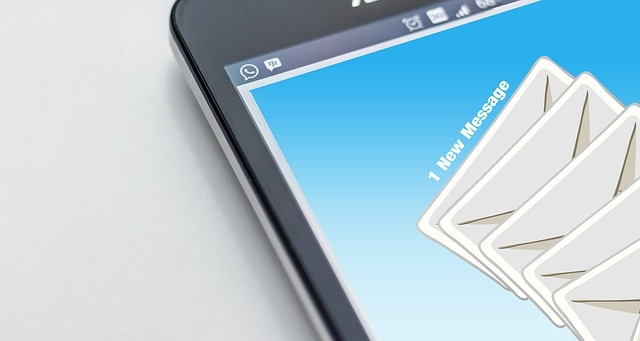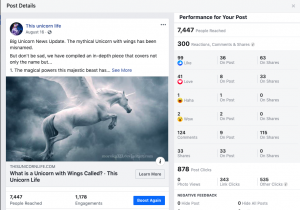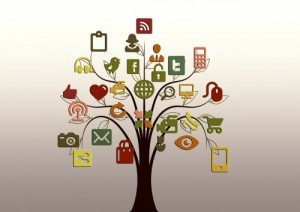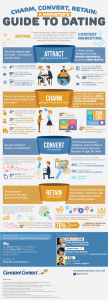— August 18, 2017

geralt / Pixabay
After 4+ years we’ve made some discoveries as to what kind of email gets our customers more business, and higher ROI long term. Some of this is through the prism of what works for tech contracting business and other similar businesses. They are built on high transaction value, long term, repeat business that requires technical skills their customers either don’t have or would rather not use.
It’s somewhat different in other spaces. For example, some pure e-commerce companies (depending on their market) or hospitality business we help may use strategies that fly directly in the face of these. Those organizations actually strive to achieve the “mistakes” noted in our recent Email Marketing Mistakes post. For them, they aren’t mistakes, but a proven email marketing strategy. Again, it’s all about market and audience; followed by measurement and testing.
“…..there is a continued underinvestment in email marketing relative to the sales and value it is generating” – Ecoconsultancy – 2017 Email Industry Census
What Works For Email Marketing: Delivering Long Term Value
As with any other customer transaction, with email marketing, delivering consistent value is vital. That’s true in all spaces, across all industries. Every email sent must deliver value to your target audience. It’s why the better you know your audience, the more successful you’ll be. You’ll know better what they find value in and how to deliver it.
A key question for delivering long term value:
Do you know who your target audience is and why they’re your target audience? Think about it from their perspective. Does your latest message deliver value to them? Did the previous one? Together this creates what we call Value History.
Value History and How it Helps Your Email Marketing:
Compelling subject lines are vital for short term open rates, but if the value history is not there, open rates decline precipitously over time, and eventually, many will unsubscribe. If you have created solid value history, that precedent makes your audience open and read your email messages.
The audience for our clients’ tech contractor clients is primarily affluent home owners and contractors serving them, such as custom home builders and architects. Sending out emails that have value to them and developing a value history keeps long term open rates high. It’s worked very well.
What Works: Concept driven content, rather than product or service driven content.
For example, our client’s tech contractor customers strive to enhance their customers’ lifestyles.
What are the most popular concepts they use to do that?
What are the latest lifestyle enhancement trends?
What are some new and innovative ways their customers could use these concepts?
Communicating those in an entertaining fashion keeps readers coming back for more. It sparks ideas in customer’s minds and puts the business’ brand in front of them on a long term basis. You’re in their consciousness day in and day out, so whenever something related to your business comes up, your brand is on their mind. That’s your goal.
What Works: Focus on building your own brand, not your vendors.
We ask our customers what the most important brand they sell is. The point is flat lost on many. They answer with names of their leading vendors, they have missed the point completely. The most important brand they sell is THEIRS!
The mistake here is trying to leverage a manufacturer’s brand recognition. The problem is that, for the general consumer, specialized manufacturers have virtually zero brand recognition. For A/V tech customers, if a brand’s not named Sony, Samsung, or Bose, most consumers haven’t heard of them. Quick, ask your mom, what’s RTI and what do they do? How about Atlona, Martin Logan, or Krell? Precisely.
If you’re in a space where brand equity is high among your audience, leveraging your vendor’s may work, but not so much in many markets. Don’t waste the audience’s attention on it, put your brand there instead.
YOURS is the most important brand you sell. Consistently putting your brand in front of customers and associating it with long term value is job one from a relationship marketing standpoint. Email marketing is tailor made for doing just that.
Rarely or never mention brands in your email messages unless your business sells something where your target audience comes to you specifically for that brand.
What Works: Using plain language your customers understand.
Excessive industry buzzwords are a common email marketing problem. Spoken to your attorney or accountant lately? Yeah, well, it’s the same in the many other spaces too. The problem for many businesses is that their customers aren’t in their industry. Some may have a basic understanding, but many folks just want you to solve their immediate problem. They want to know what cool ways their lifestyles can be enhanced, and if you can help them do it.
This is a concern in any industry. Remember your target audience.
FOR EXAMPLE: If yours is accountants, hard hitting info full of terms such as difference on consolidation, return on capital employed, and working capital cycle, would be on the right track. Those may be too over the top for Joe/sephene average who just want a better handle on where their money goes each month or how to get the most back on their taxes.
If your audience is dermatologists, dropping an Exocytosis, Lichenification , or Onychocryptosis is to be expected. If your email newsletter is aimed at people with acne, those terms might be a bridge too far.
We’ve scrubbed our customers’ messages clean of such complicated talk unless there is absolutely no other way to convey the information, or that is exactly the language they want to hear.
If there isn’t a simple way to discuss things, that begs the question; should you even be talking about it in the first place? The K.I.S.S. principle has worked, and helped keep our customers’ long term unsubscribe rates low and open rates high. Yours may of course, be different….. testing and tracking…
What Works: Using an eMail Marketing System
A system makes things repeatable, scalable, and easier to implement and maintain. Using an email marketing system, whether outsourced or done in-house, delivers the same benefits applied to your marketing. Most email marketing systems today offer a plethora of features, from marketing automation to “done for you” landing page templates you can customize for your audience and objectives.
How to Improve Your Email Marketing
Goal: Keeping Subscribers Long Term (Reducing Churn)
Keeping customers long term is essential. It’s the whole point, really. It gives us, as marketers, more opportunity to build customer relationship, grow trust, and facilitates sales. Heck, you may even make a friend or three! Some pretty good friends started out as customers.
We’ve kept our clients’ open rates high over the long term. From all the analysis we’ve done, the key factor to long term retention and high open rates is perceived value, with value history following closely behind.
Long Term Email Marketing TIP: When doing “done for you” newsletters for our clients, we focus on topics that benefit both our clients and their customers. However, we often include other content that has no direct benefit for our clients, only their customers.
Remember, if your existing customer is your target audience, benefit them, not so much yourself. That’ll come later, if you give it the chance. This is a long term play, and it’s essential to keep that in mind when planning your messages and voice.
Why Use This Email Marketing Strategy?
Why include content that doesn’t directly benefit our clients if we sending email to their customers? Because it benefits those customers, who are really the target audience. If we only sent content that was highly related to our customers’ business, we discovered their customers who weren’t all that interested in that sort of thing until they needed it would eventually unsubscribe. Not an epiphany, but pretty important for long-term retention nonetheless.
EXAMPLE: If you’re sending out B2C content for custom residential audio video tech contractors, sending content highlighting cool AV concepts that the audience may enjoy in their homes has a direct benefit to your clients. Including 3 delicious barbeque recipes in the middle of June doesn’t help the AV contractor one bit, but it’s timed and themed to give their customers a nice value shot. The more value they get, the longer they stay subscribed and the longer your brand stays in front of them.
For our residential tech clients, there are plenty of places online to get consumer pure electronics info. If that’s what their customers wanted, they’d be reading Engadget or Sound and Vision.
KEY TAKEAWAY:
Delivering other varied content in addition to the central, recurring theme helps ensure email subscribers find enough value to continue opening your newsletter, if not downright enjoying it.
A couple of other interesting discoveries worth noting:
We’ve found that you can’t compare open rates between customers, even in the same specific industry. Our customers who enjoy the highest open rates do so fairly consistently. It has much to do with their specific customer demographic and the relationship they’ve built to this point.
For Example:
Our customer with the highest average open rate among their customers (we’ll call them “Customer A”) typically sees open rates of 39.5% from their customers, while our customer whose customers see the lowest historical open rates (“Customer X”) normally averages 20.7%. A dip in overall open rates among all our customers would not change their order. Customer A still enjoys the highest open rates, while Customer X still has the lowest.
A release-to-release variance usually indicates of the subject line we used or external factors, such as a holiday season. That means our “Customer A” might see only 29% for a release. In the same release, our “Customer X” would likely still trail them, maybe hitting 18%.
Email Marketing Metrics: Measuring Success
So, how do you know whether you’re succeeding at the email marketing game or not? At the risk of sounding brash, are you making more money? Has revenue, and more significantly, profit, risen? How do you know, and how can you prove it was due to your email marketing? There’s a simple way to know: TRACK and TEST EVERYTHING!
If your mailing list is large enough to deliver statistically significant results, split testing works well. In such testing the data base is split and half get one variable, half the other. This is used to test many variables from contact button colors to headlines. The catch is that the contact list must be large enough that a small percentage of it can be used for the split test before the test winner is sent to the remainder of the list. Most custom install firms don’t have a contact list that large.
There are a few simple metrics that tell the email success story (or not):
Open Rate
Precisely what it sounds like: the percentage of recipients who opened the email. It’s not to be confused with the number of times it was opened. Many recipients will open it several times, so calculations based on the number of times it was opened will be next to useless.
Click Through Rate
The percentage of recipients that clicked on links in the message. The higher the click through rate, the more recipients clicked on the link to your website or contact info.
Here’s how to raise your click through rate (CTR):
- Have a clear and compelling call to action
- Ensure the offer is well matched to the audience
- Craft the email message before the call to action to build interest and make clicking on the link an eminently desirable thing to do.
There’s also something else that makes a massive difference in click through rate, and it has nothing to do with your messaging, call to action, or any other traditional marketing metric. Do your customers like and trust you? Building trust is a kind of chicken and egg scenario. You must do it to maximize the success of your email marketing (or any other marketing, for that matter). However, you also build it through your email marketing efforts.
Share Rate
What percentage of your recipients spread the word? These days, your email marketing can be a valuable lead generator. Facilitate social sharing and email forwarding so that your audience can introduce you and your company to others. The share rate is the percentage of those who clicked on the social sharing icons or forwarded the email to others. It’s another reason to use software as part of your email marketing system. All email marketing platforms will give you measurement ability. If yours doesn’t, look at alternatives ASAP!
Long Term Conversion Rate
At the end of the year, LTCR is your most important metric. What percentage of your audience has contacted you within 1 year? It depends on your goals of course. For restaurants and nightclubs, you’re typically working with a much shorter time horizon. You’ll deliver long term value, but the aim is to generate immediate business, so promotions and teasers are effective. There even more effective when combined with other high value elements.
For high transaction value businesses, you will normally lean more towards “dripping” long term high value content that’s insightful and immediately actionable for your audience. Newsletters, online courses, report series, and the like are where your bread’s buttered. This kind of email marketing isn’t aimed at driving sales from the very first email, although that certainly has happened.
The goal is to stimulate contacts from people who are pre-tensioned to buy.
The emails have built trust and relationship. They’ve illuminated the prospect’s problem and possible solutions, and positioned your organization’s solution as a leader. It’s up to your sales team to turn the contact into a meeting and then a sale. Most of them are experienced at doing so.
Unsubscribe Rate
Here’s a metric that’s better off low. What percentage of the recipient list unsubscribes each month? In our experience, it’s natural for unsubscribe rates to be higher at the beginning. After a short initial period, it drops to virtually zero, likely because those who are still there like the content, and want to receive it. That’s partially affected by how your list is growing. We discovered that for our audience, fast growing lists have higher unsubscribe rates. We expect this is due to the relatively higher percentage of new subscribers.
strong>Interesting Email Marketing Discovery: Long term email marketing can be effective even among those who never or rarely open your emails. Our theory is that just regularly seeing your brand in their inbox has a somewhat significant effect. The operative word here is “regularly”. Carve another notch for consistency.
In the End: What We Discovered About Effective Email Marketing Systems
Key Takeaways:
Perceived Value’s King, all apologies to content: It’s all about the audience’s perceived value. If they’re getting something out of it, they will continue receiving and opening it, giving you an ongoing opportunity. Audience-centric rules the day. The more consistent the contact, the more your brand’s in front of them. It only works if the value’s there, however.
Have a Purpose Know why you’re sending. Have specific goals. When we are working with contractors, the goal is for the contractor to get better connected with their clients, which ultimately leads to a contact. Our emails pretension them to buy, but the goal is a contact which leads to a site meeting for the contractor.
The right email marketing system delivers a high value and effective way to keep existing customers engaged and make them long term customers. Those are arguably a business’s best asset and a steady stream of high profit, lower effort business. Although it can be easy to let engaging them fall down the priority list, that’s a costly and avoidable mistake that pulls profit away from your organization.
“For a medium that has been so readily and regularly written off over the years, and one that remains undervalued by companies in terms of budget, it is striking how healthily email marketing continues to perform as a channel for marketing communications, and how much room it retains for innovation and development.” Ecoconsultancy, 2017 Email Marketing Industry Census
Does your business have an email marketing system in place?
Digital & Social Articles on Business 2 Community
(102)
Report Post







